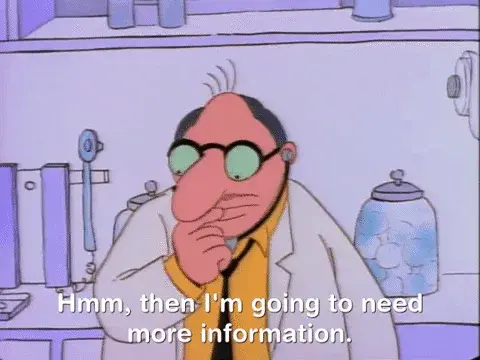Why Rafiki
Pricing


Pricing
Solutions

RevOps Leaders
Synchronize revenue generating functions

SDR Leaders
Get your team aligned and Coach your Reps 3x faster at scale

Sales Leaders
Unlock pipeline truth, drive confident forecasts

Not all well-done demo meetings convert to closed deals. According to a published Softletter report, SaaS companies report trial-conversion rates of 25%. At that rate, your business is losing 3 out of 4 prospects with ‘buying intent’. While there could be many reasons, the advent of remote selling has resulted in shrinking attention spans and an information hoard in buyers’ inboxes. Reps in 2022 who still follow typical sales follow-up strategies to get the attention of their prospects after demos are seriously underequipped. Legacy sales follow-up strategies that rely on templated email sequences at best delay deal closings and at worst bust winnable deals. A critical gap in the effectiveness of typical B2B sales follow-up approaches becomes evident when they get put through the numbers test. This gap of ineffective post-demo sales follow-up acts as a silent killer of revenue.
This blog sheds light on FIVE reasons why legacy sales follow-up strategies are ineffective in the B2B selling landscape of 2022.

Reps do all the hard work of getting the demo with prospects and delivering pitches that they have rehearsed multiple times. But they can not always communicate all the key selling points in a meeting, either due to lack of time or not having appropriate information ready to respond to the plethora of questions from prospects about the service. Even if they somehow manage to squeeze in all of the critical points whether those points stick with prospects is a serious question. A recent study by Microsoft concluded that the human attention span has dropped to eight seconds – shrinking nearly 25% in just a few years. The undelivered selling points and key factors that prospects misconceive, along with their distracted attention spans grievously stall the flow from demo to deal.

As a standard practice, most sales follow-ups boil down to creating and automating an email sequence or using a typical email recap of prior meetings with some action items. According to Gartner, only 23.9% of sales emails get opened. The optimal number of follow-up emails to send is 2-3.
Reps must capture the attention of prospects and keep their interest alive within these 2-3 spaced-out emails. If not, they stand to lose winnable deals despite doing the hard work of capturing attention and delivering a good pitch. Just spaced out, old-school text emails do not cut it anymore. Reps need to reinforce their follow-up message with compelling, personalized content that cuts through the noise of inundated inboxes.

“Hey {first.name}, how’s the weather at {city}?” is no longer active personalization. Emails with “Circling back”, “Touch-base” and other such jargon find themselves in the trash folder. They are perceived as mere sales attempts by prospects and not as value-add emails to follow up. Typical personalized messages as part of follow-up sequences, even after a great demo meeting, still do not have the desired effect on prospects because they offer no context of prior meetings.
To offer complete context, throwbacks in the emails must refer to key demo moments with the prospect.
However, the throwback references make the emails much longer to create, and generic links to the entire meeting from a typical conversation intelligence tool stand to lose prospect attention. Who has the time to review the whole meeting looking for context? Reps get caught in a catch-22 situation that hinders them from taking their deal forward - despite having the recording from legacy conversation intelligence tools if at all they have one.

Even in the rare case that reps have delivered all value-adding points, followed up with the whole context, and sent all persuasive material to their prospects, the lack of centralized information comes back to bite them. The prospects have to sift through lengthy email threads, and application-hop to find collateral, and validate their purchase recommendation to multiple sources to their higher-ups. The lack of centralized information on the deal hurts the deal itself.
77% of B2B buyers say their latest purchase was either “Difficult” or “Very Complex”. They have to hop across meeting videos, phone calls, battle cards, pricing sheets, and chats with reps to consolidate information. They have no incentive to put in additional effort to prove a certain offering is better, especially when they are pressed with their daily organizational duties. It is fair to assume, they are unlikely to do a thorough job!
According to Forbes, 67% of B2B buyers say easy access to pricing and competitive information is vital to their purchase decision, and 75% say it is very important for vendors to share relevant content that speaks directly to their needs. Prospects would choose a solution that offers them consolidated information. While the lack of unified information causes the prospects' side to take a ‘less-than-best’ decision, it also ends up undoing all the hard work of reps close to closing the deal.

According to Forbes, “The B2B buying group consists of 6 to 10 decision-makers, each armed with four to five pieces of information they have gathered independently, and all must communicate with one another to figure out whether they should buy the solution.” The buyer enablement material reps share with prospects should cater to each buyer-side stakeholder's information requirements. In many cases, the decision-makers are looped in at later stages and have to make decisions based on the recommendation of juniors without much information or context. The onus once again falls on the reps to deliver centralized information, with the whole meeting context to all cadres of decision-makers, and enable them to make purchases best suited to their needs.
Reps need to have better post-meeting sales engagement tools that are game-changers to truly help them to reach out to prospects with the whole meeting and communication context, answer their questions in reference to their meetings, offer a centralized source of information, and can act as an information trove for stakeholders looped in late to the party. Such needs had to be fulfilled by different applications serving specific purposes before Rafiki!

Rafiki is an AI-powered sales engagement intelligence platform that enables sales teams to close deals 20% faster. With Rafiki, reps can record & transcribe meetings, create video snippets of key meeting moments flagged by Rafiki’s AI, add in-line comments to the snippets and share them with prospects through a deal-exclusive communication channel. Rafiki enables reps to share meeting information and address prospects' questions async with the whole meeting context. Rafiki helps reps act as a concierge service throughout the prospects’ buying journey and deliver a great buying experience. By enabling reps to give a cohesive buying experience, Rafiki helps accelerate the process from demo to deal and ensures that winnable deals never slip out of reps’ hands.